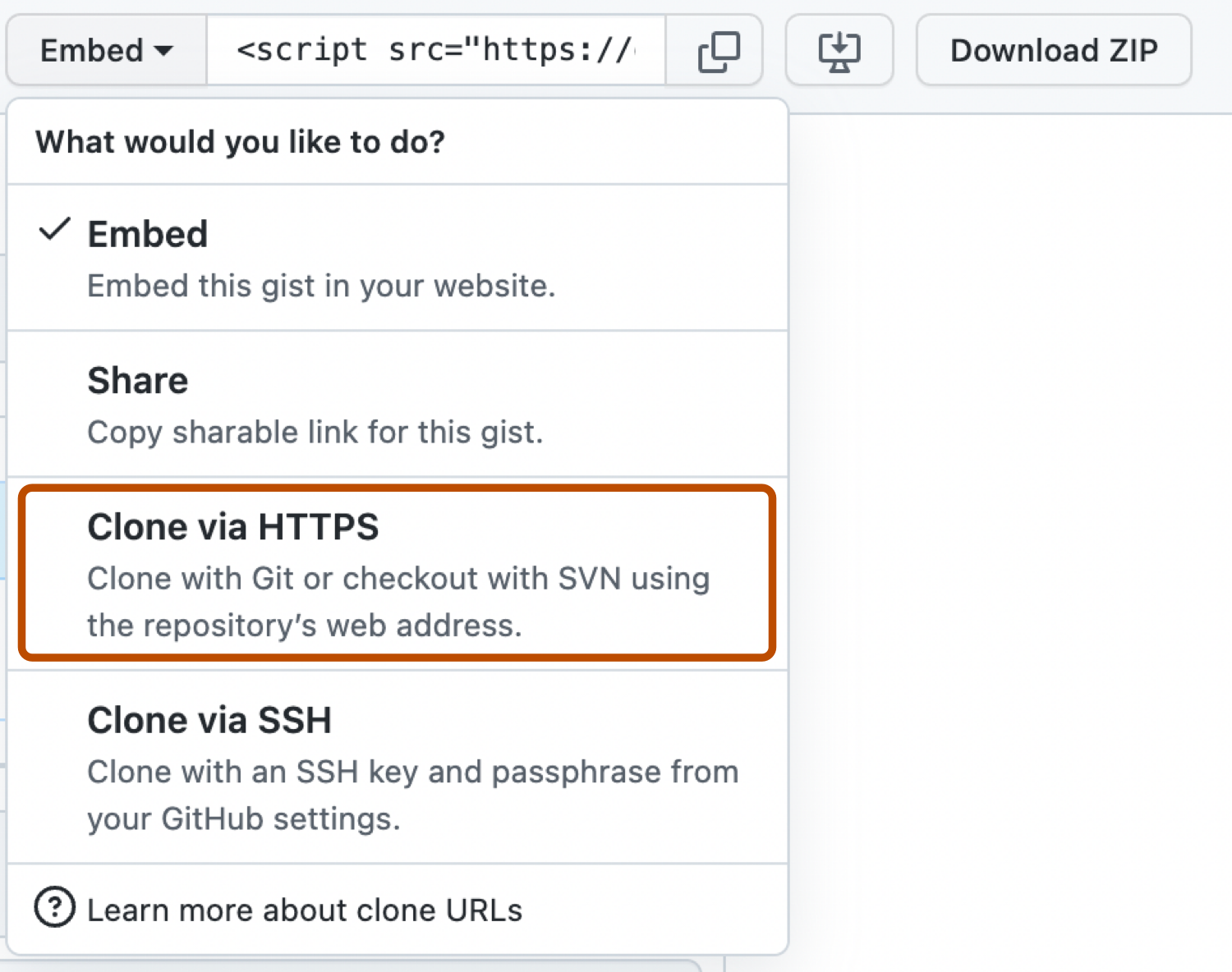Forking gists
Each gist indicates which forks have activity, making it easy to find interesting changes from others.
Cloning gists
If you want to make local changes to a gist and push them up to the web, you can clone a gist and make commits the same as you would with any Git repository. For more information, see Cloning a repository.
To clone a gist, select the Embed dropdown menu, then click Clone via HTTPS or Clone via SSH.

Viewing gist commit history
To view a gist's full commit history, click the "Revisions" tab at the top of the gist.
You will see a full commit history for the gist with diffs.
